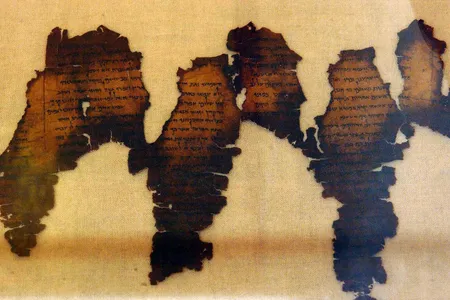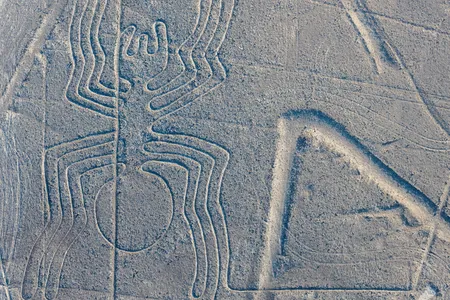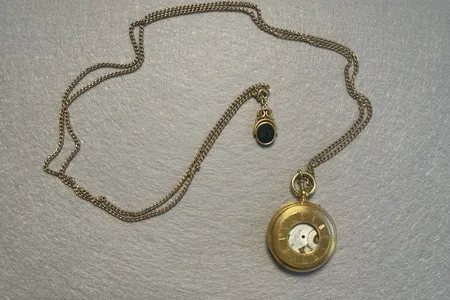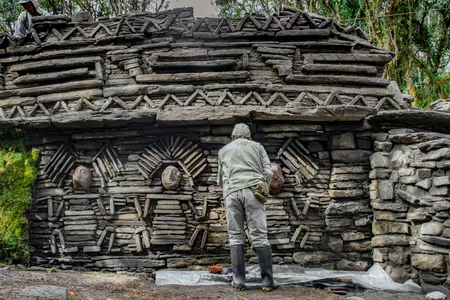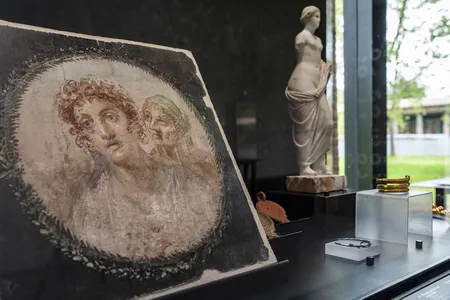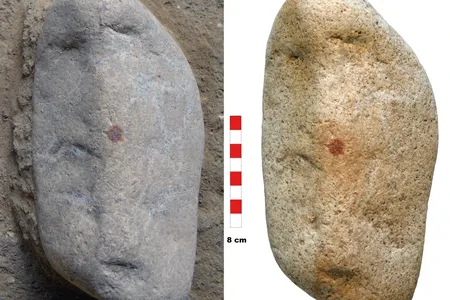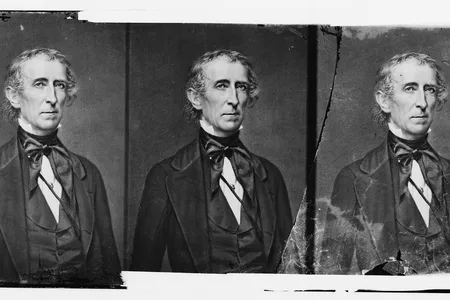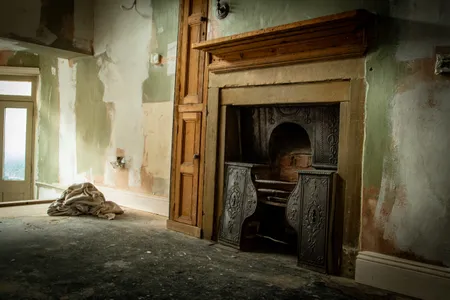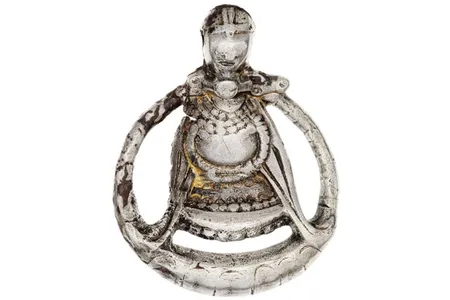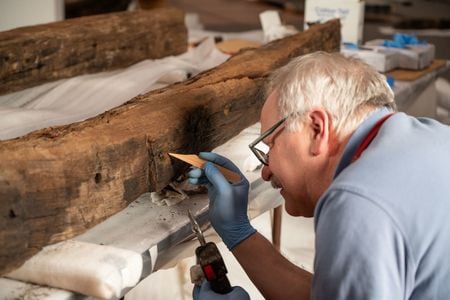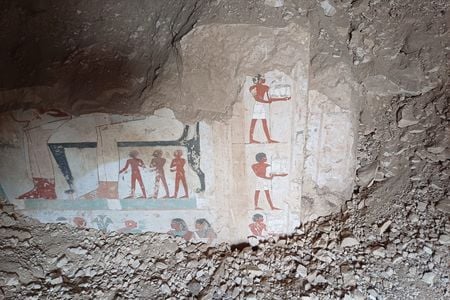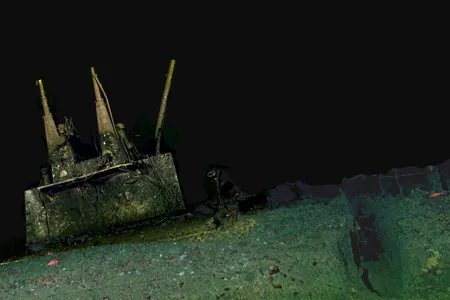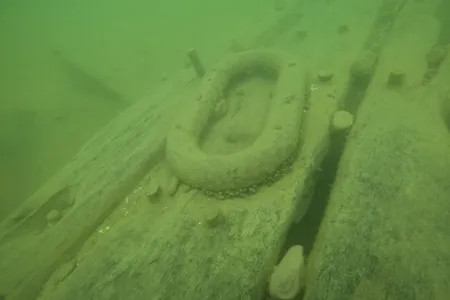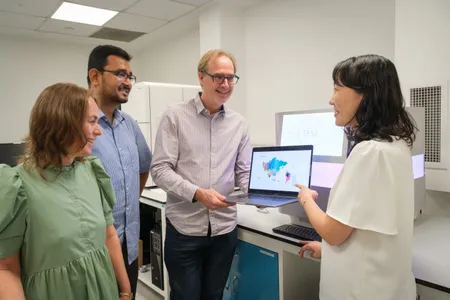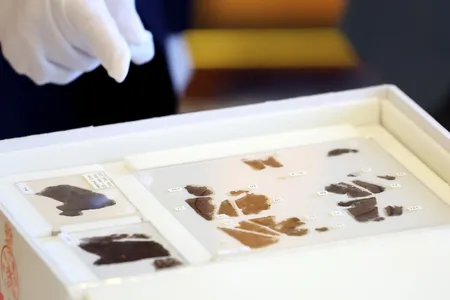The Dead Sea Scrolls Changed Our Understanding of the Bible. Could Some of Them Be Even Older Than We Thought?
A new study combines A.I., radiocarbon dating and handwriting analysis to estimate new dates for some of the ancient scrolls, thought to be some of the earliest surviving fragments of the Old Testament
Nearly Half of the Protected Land Around the Nazca Lines of Peru Is Now Open to Miners
Some environmentalists are concerned about mining operations drawing closer to the ancient landmarks
Pocket Watch Recovered From Lake Michigan’s Deadliest Shipwreck Returns to Owner’s Hometown After 165 Years
The timepiece belonged to Herbert Ingram, a British journalist and politician who died when the “Lady Elgin” sank in 1860. His watch was recovered from the bottom of the lake in 1992
Tourists Are Stuffing Coins Into the Cracks of the Giant’s Causeway, Damaging the Iconic Site in Northern Ireland
Authorities are urging visitors to stop wedging pocket change between the basalt columns, which are cracking and crumbling as the coins expand
Archaeologists Discover More Than 100 Structures Linked to a Mysterious Pre-Columbian Civilization in the Remote Peruvian Andes
Based in high-altitude urban centers, the Chachapoya resisted conquest by the Inca Empire for centuries
What Was Daily Life Like for the Women Who Lived in Ancient Pompeii 2,000 Years Ago?
A new exhibition is spotlighting the women who have long been sidelined in histories of the Roman Empire—from mothers and weavers to entrepreneurs and influential tavern owners
Did a Neanderthal Who Lived 43,000 Years Ago Paint a Red Nose on a Rock That Looked Like a Face?
Researchers theorize that an adult male dipped his finger in red ocher and intentionally used the pigment to complete the face he saw on a small granite stone
Last Surviving Grandson of President John Tyler, Who Took Office in 1841, Dies at 96
When Harrison Ruffin Tyler’s grandfather was born 235 years ago in 1790, George Washington had just become the nation’s first president
The Chrysler Building Has Towered Above New York City for Nearly a Century. Now, the Art Deco Skyscraper Is for Sale
When it was completed in 1930, the 1,046-foot building was briefly the tallest in the world. In recent years, it’s fallen into disrepair
You Can Now Visit the Small House Where Charlotte, Emily and Anne Brontë Were Born
The newly renovated Brontë Birthplace in Bradford, England, was the three sisters’ home until 1820, when the family moved to a nearby parsonage
Experts Think the Hagia Sophia Is in Danger. They’ve Got a Plan to Protect It From Earthquakes
Turkey is located near two fault lines, leaving the 1,500-year-old structure vulnerable to damage. Architects and engineers will be investigating how to best preserve it
This Bewildering Byzantine Bucket Stumped Archaeologists for Decades. Now, They’ve Finally Discovered Its Purpose
Fragments of the bucket were first found at England’s Sutton Hoo burial site in 1986. New research has revealed that the 1,500-year-old artifact was probably used as a cremation vessel
How Did Vikings View Pregnant Women? New Research Reveals That They Were Sometimes Depicted With Weapons
Researchers studied Old Norse literature and archaeological evidence to shed new light on women’s experiences of pregnancy during the Viking Age
Revolutionary War-Era Gunboat Found Underneath World Trade Center Wreckage Finds a Permanent Home in Upstate New York
Researchers are reassembling the ship, which was likely built in the 1770s near Philadelphia
Egyptian Archaeologists Unearth Ancient Tombs Belonging to Three Senior Statesmen Who Helped Keep the New Kingdom Running
The burials were found at Dra Abu el-Naga, a necropolis for nobles and officials on the West Bank of the Nile River
See a Lost U.S. Navy Submarine, Sunk During a World War I Test Run, in Digital Detail
Researchers descended to the wreck in underwater vehicles to collect data for 3-D models
He Went Out to Catch Fish in Lake Michigan—and Discovered a 102-Year-Old Shipwreck Instead
Angler Christopher Thuss stumbled upon the scuttled tugboat “J.C. Ames,” which was located just nine feet below the surface off the coast of Manitowoc, Wisconsin
Where Was Soccer Invented? A New Archaeological Discovery Suggests Scotland, Not England, Was the Sport’s Birthplace
Archaeologists say they’ve found the ruins of a soccer field in southwest Scotland that date to the 17th century
Scientists Use DNA to Trace Early Humans’ Footsteps From Asia to South America
Over thousands of years, humans from Eurasia trekked more than 12,400 miles to eventually reach the southernmost tip of South America, a new genetic investigation suggests
The Smithsonian Transfers Rare 2,300-Year-Old Silk Manuscripts to China
The Zidanku Silk Manuscripts were smuggled into the United States in the 1940s. Scholars say they provide remarkable insights into ancient Chinese philosophy and religion
Page 7 of 319
